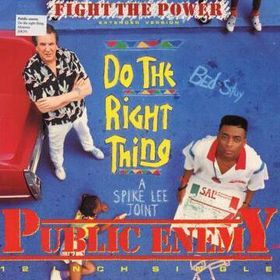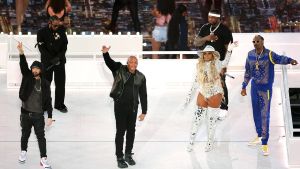
When Public Enemy released “Fight the Power” in the ‘80s, it shook the world.
“At the time of the song’s release, it was during the riots happening in Detroit,” Brianna Mack, freshman communications, music industry and business major, said. “So, it talks about police brutality, pop culture and a lot of important pressing issues that were important to black people at that time, and still are now.”
For over 40 years, hip-hop and rap has originally set an outlet for the black communities to express themselves and the challenges they face daily considering their culture and skin color.
“I think hip-hop/rap is a way for them to say whatever they want to say,” Griffin Rogers, sophomore business management major, said. “It’s a way for them to share their stories of upbringing.”
Stephen Grieco, the head of the music department, said hip-hop, rap or hip-hop and rap has been used as a voice for black people to express themselves and on what is occurring in their communities.
“It has shed light on things that weren’t shown before,” Grieco said. “Unfortunately, a lot of the themes and things that happened back then in the ‘70s and the ‘80s are still today, prominently happening.”
According to Mack, hip-hop, rap or hip-hop and rap was created by black people for black people. She also highlighted a few famous artists’ fashion styles, like Mary J. Blige and Lil Kim.
“Any celebrity you see wearing a similar outfit to the ones they wore, it was because they were inspired by them,” Mack said. “If you look up the artists, you’ll see their outfits.”
Whether it’d be through the music or the clothes, “hip-hop/rap has been a staple in American culture since it came out,” Mack said.
Super Bowl LVI Half-Time Show
On the evening of Feb. 13, five of the biggest names in the rap game, Dr. Dre, Snoop Dog, Mary J. Blige, Eminem and Kendrick Lamar, preformed on the sports world’s biggest stage, Super Bowl LVI. This is the first time that rap artists had preformed at the legendary game’s halftime show.

“Everyone in our generation knows these famous artists and their songs of the older generation,” Rogers said. “This shows it doesn’t have to be a pop or R&B artist.”
Despite other rappers that had performed at the half-time show, this one in particular, is significant because of the key people that performed.
“You’ve got Dr. Dre and Snoop Dog passing the baton, more or less to the younger hip-hop/rap artists, like Kendrick Lamar,” Grieco said. “So, I think it celebrates all of that. Hip-hop/rap has surpassed rock nowadays.”
Grieco mentions a few components, such as the continuous COVID-19 pandemic and how this is a great chance for people to come together. He also talks about how hip-hop, rap or hip-hop and rap become a major force in the music industry.
Whether it’d be at the half-time show for the Super Bowl or a concert, hip-hop/rap is effortlessly and constantly changing daily aspects for black people.
“Rappers can express themselves and show that rap isn’t what you just hear on your phone,” Rogers said. “There’s never been a popular group of rappers on the half-time show that has helped rap expand for black communities.”



